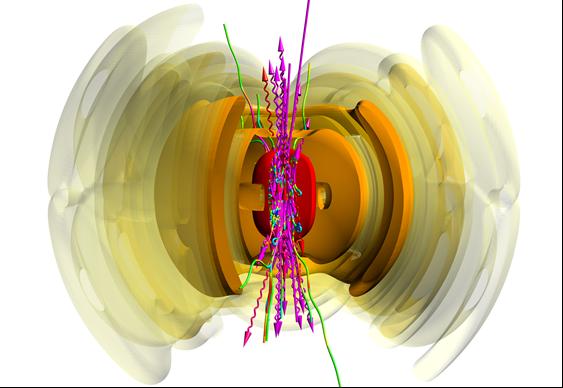Researchers have found a way of producing gamma rays in a more efficient way than ever before. The energy that’s obtained is around a billion times higher than the energy photons produced within the visible light. This new discovery could pave the way towards a whole new branch of fundamental studies.
“When we exceed the limit of what is currently possible, we can see deeper into the basic elements of nature. We can dive into the deepest part of the atomic nuclei,” says researcher Arkady Gonoskov of The Department of Physics at the Chalmers University of Technology, Sweden.
Results from the study were published in the journal Physical Review X. The effort was a combined effort in collaboration with the Institute of Applied Physics, Lobachevsky University in Russia, and the University of Plymouth in the U.K. Numerical models and analytic estimates for simulating these ultra strong gamma rays were created by computer scientists to help.
Normally, When you shoot a laser pulse at an object, all the particles within it scatter. However, if the laser beam is so intense and all the other parameters are just right, then the particles become trapped and begin to behave in a very strange way. “The cloud of trapped particles efficiently converts the laser energy into cascades of high energy photons – a phenomenon that is very fortunate. It’s an amazing thing that the photons from this source can be of such high energy,” says Mattias Marklund, the professor at the Department of Physics at the Chalmers University of Technology.
This discovery comes at a very good time for future large-scale laser facilities that are being constructed right now. They will begin to house the world’s most intense light sources on the Earth. “Our concept is already part of the experimental program proposed for one such facility: Exawatt Center for Extreme Light Studies in Russia. We still don’t know where these studies will lead us, but we know that there are yet things to be discovered within nuclear physics, for example, new sources of energy. With fundamental studies, you can aim at something and end up discovering something completely different – which is more interesting and important,” said Gonoskov.











